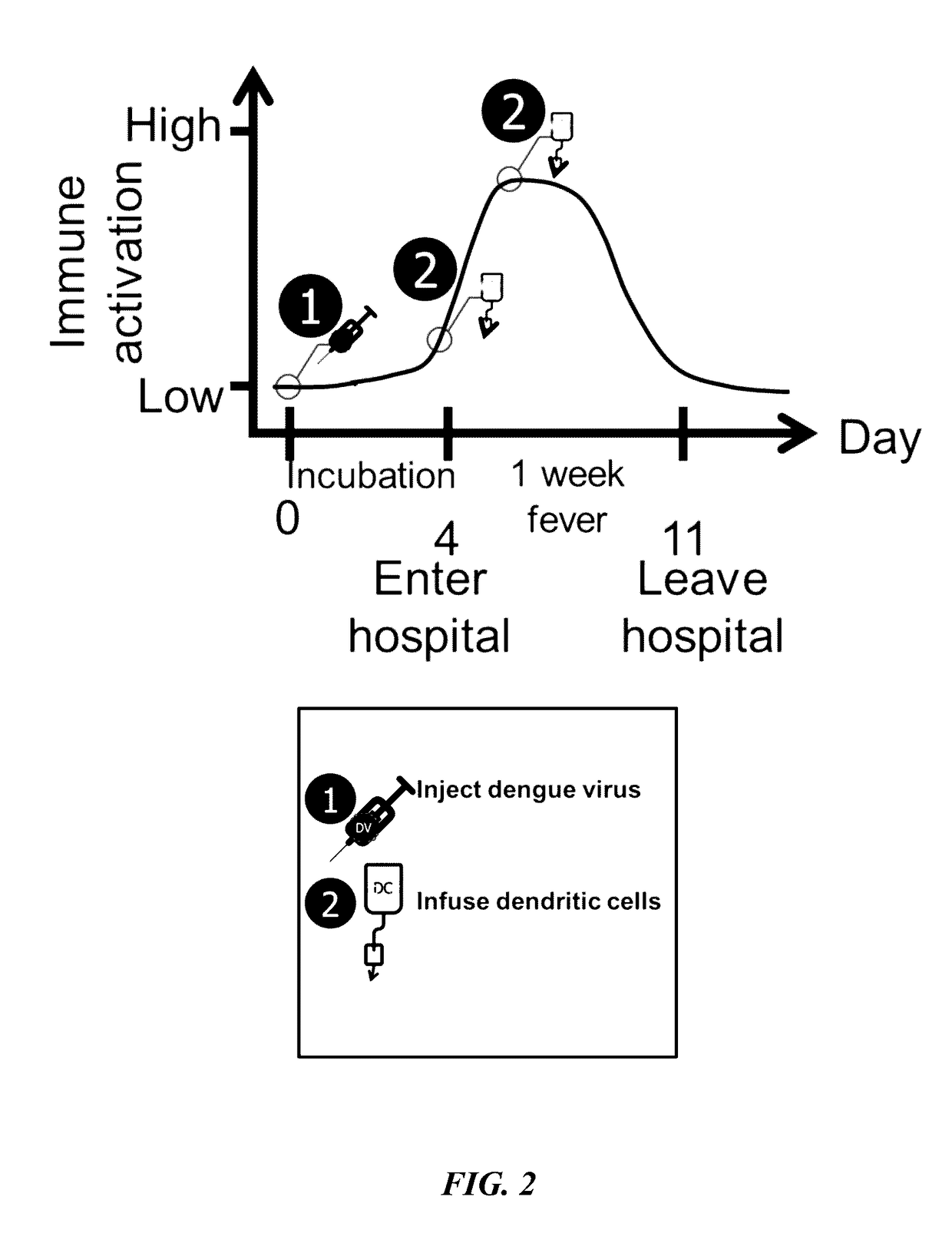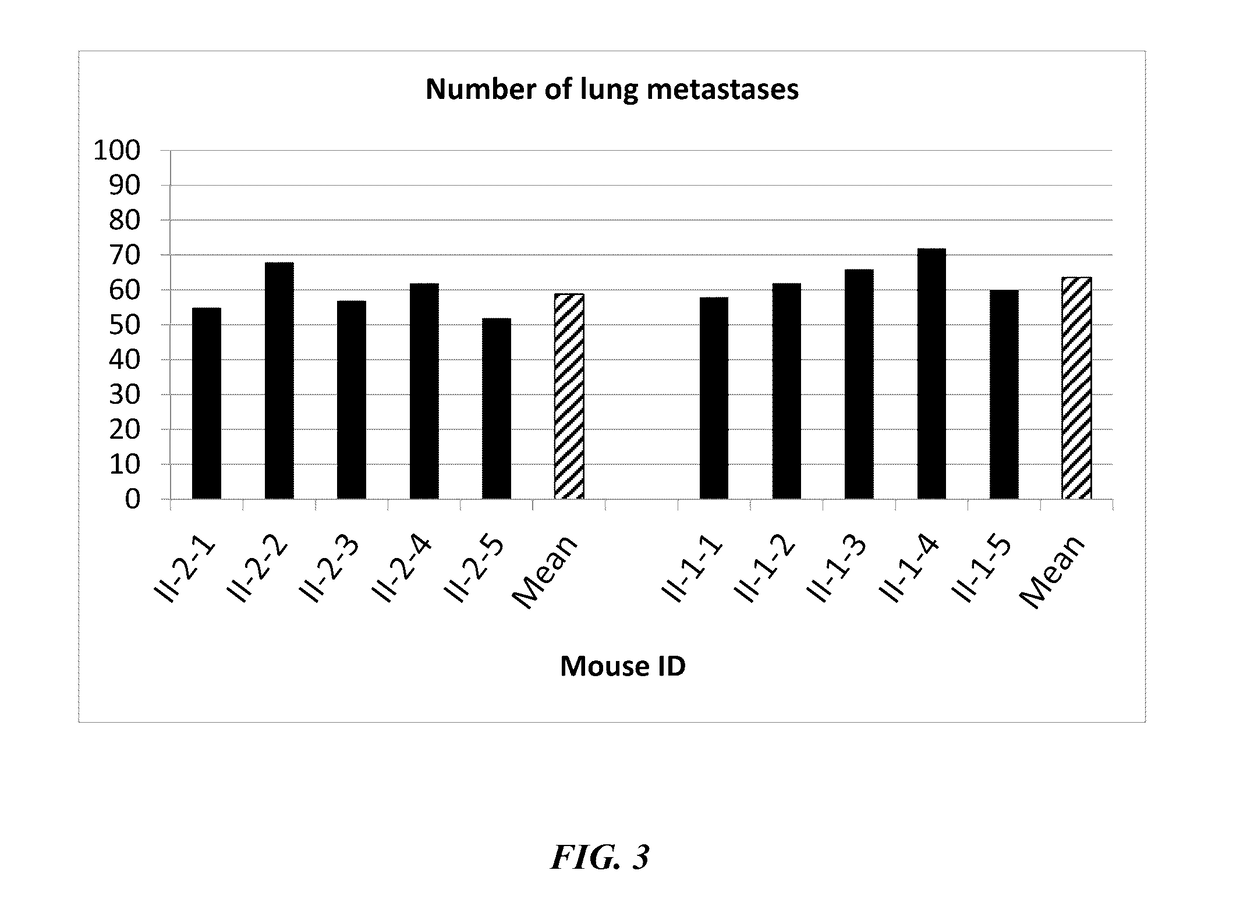Compositions and methods for producing dendritic cells
a technology of dendritic cells and compositions, applied in the direction of antibody medical ingredients, drug compositions, viruses/bacteriophages, etc., can solve the problems of limited success, reduced drug efficacy, and less than desirable dendritic cell therapies, so as to reduce the type 1 response
- Summary
- Abstract
- Description
- Claims
- Application Information
AI Technical Summary
Benefits of technology
Problems solved by technology
Method used
Image
Examples
example 1
n and Pulsing of Murine Dendritic Cells (DC)
[0101]A method as described by Lutz M., et. al. (J. Immunol. Methods 223:77-92, 1999), was employed to generate mature DCs form mouse bone marrow. Bone marrow suspensions were incubated in petri dishes in medium supplemented with recombinant murine GM-CSF for 10 days. Non-adherent cells were collected, centrifuged and resuspended in medium containing GM-CSF and lipopolysaccharide. Two days later, the DCs were harvested and their viability was determined by trypan-blue exclusion. Purity of the DCs was determined by flow cytometry analysis. DCs were pulsed with the synthetic peptides at 10 pg / ml for 18 hours. After 18 hours of incubation, DCs were harvested, washed twice in HBSS, and resuspended in HESS for additional studies (see Example 2 and 3).
example 2
rus and Dendritic Cells for the Treatment of Melanoma in a First Mouse Model
[0102]A mouse model assay was performed to observe results from combination targeting of cancer cells using a Dengue virus (DV) strain and tumor antigen primed dendritic cells (DCs). DV C57BL / 6 mice were inoculated with 0.05 ml of Dengue virus (DEN-2 strain #1710) at 1×106 or 1×107 pfu / ml by injection in the base of tail. Recombinant murine IL-2 (Genzyme) and IFN-gamma (Sigma Pharmaceuticals) were administered by intravenous infusion at 2,000 (rIL-2) and 500 1U (rIFN-gamma) on days 5, 10, 15, and 20 following administration of Dengue virus (DEN-2 strain #1710, CDC database entry number 555, provided by Dr. Duane Gubler). Seven days after the Dengue virus administration, C57BL / 6 mice were immunized with mouse DCs incubated with the 2 peptides separately and injected intravenously. Peptides were synthesized. The H-2b-restricted peptide from Ovalbumin (OVA-8), SIINFEKL (SEQ ID NO: 7), was used as a control. B16...
example 3
rus and Dendritic Cells for the Treatment of Melanoma in a Second Mouse Model
[0104]A mouse model assay was performed to observe results from combination targeting of cancer cells using a Dengue virus (DV) strain and tumor antigen primed dendritic cells (DCs). Mice were administered cytokines to parallel the response to DV observed in humans.
[0105]Tumors were established in mice using the H-2b-restricted B16 murine melanoma cells line (ATCC #CRL-6322). Peptides (B16 melanoma associated H-2b-restricted peptides derived from antigens gp100 / pme117 and from TRP-1 / gp75) used for pulsing the dendritic cells were synthesized. Dendritic cells were generated from mouse bone marrow according to methods as described in Lutz et al. (J. Immunol. Methods 223:77-92, 1999).
[0106]On day 0, mice received 5×104 viable B16 melanoma cells intravenously in the lateral tail vein to establish pulmonary metastases. On day 7, the mice were inoculated with 0.05 ml of Dengue virus (DEN-2 strain #1710, CDC datab...
PUM
 Login to View More
Login to View More Abstract
Description
Claims
Application Information
 Login to View More
Login to View More - R&D
- Intellectual Property
- Life Sciences
- Materials
- Tech Scout
- Unparalleled Data Quality
- Higher Quality Content
- 60% Fewer Hallucinations
Browse by: Latest US Patents, China's latest patents, Technical Efficacy Thesaurus, Application Domain, Technology Topic, Popular Technical Reports.
© 2025 PatSnap. All rights reserved.Legal|Privacy policy|Modern Slavery Act Transparency Statement|Sitemap|About US| Contact US: help@patsnap.com



